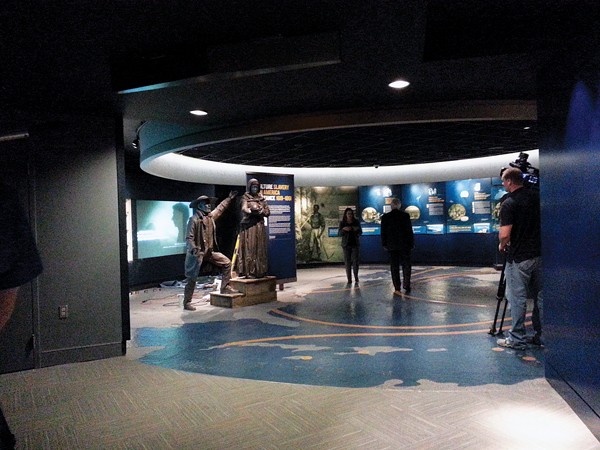 Alexandra Pusateri
Alexandra Pusateri
The Civil Rights Museum’s renovated lobby
On April 5th, after more than a year of renovations, the National Civil Rights Museum will open the Lorraine Motel doors to the public once more.
The motel section of the museum has been closed, but the exhibits across the street, through the tunnel of the Legacy Building, have remained open for self-guided tours.
Major additions to the Lorraine Motel section include upgrades and expansions to existing exhibits, and utilizing as much of the space of the motel’s structure as possible, according to Tracy Lauritzen Wright, director of administration and special projects.
“We’ve tried to maintain the basic architecture of the motel — some of our beams, along with the carpet, outline where the original rooms were positioned — so you can tell each of these spaces was originally [the] motel,” she said.
The previous museum exhibit about the slave trade has been expanded to incorporate more visuals and include more information, with expansion work done by 1220 Exhibits, Inc. of Nashville. One addition is that visitors can now see and experience the cramped space of the ships that once transported slaves from Africa.
 Alexandra Pusateri
Alexandra Pusateri
exhibit
Lauritzen Wright said by expanding the slavery exhibit, a more complete foundation can be laid for visitors to understand the civil rights movement.
“You can understand the late 19th century and early 20th century better if you understand the legal progress that embedded slavery into the nation’s laws and economy,” she said. “We wanted to do a better job of interpreting the words of the movement, which begin the moment people are taken from their families and homes, never to be returned.”
Inside the new Brown v. Board of Education exhibit, a courtroom setting provides seating for visitors to watch a short documentary about the decision. Across the room, a touchscreen hangs on the wall across from a few old-fashioned school desks. The touchscreen explores how desegregation unfolded in the United States.
The museum has updated various areas with multimedia stations, either in theater-like settings, such as the Brown v. Board of Education exhibit, or in the space itself, as with a documentary playing against the side of a 1960s sanitation truck in the Memphis sanitation workers exhibit. Previously, the sanitation truck could be seen from a balcony, but the updated display lets visitors closer to the vehicle.
According to Lauritzen Wright, making the museum more immersive was important. “Here, we’re walking on the street. We’re walking alongside the sanitation workers. We’re a part of it,” she said.
On April 4th, the day before its reopening, the National Civil Rights Museum will hold a candlelight vigil in the courtyard for the 46th anniversary of Dr. Martin Luther King’s assassination.